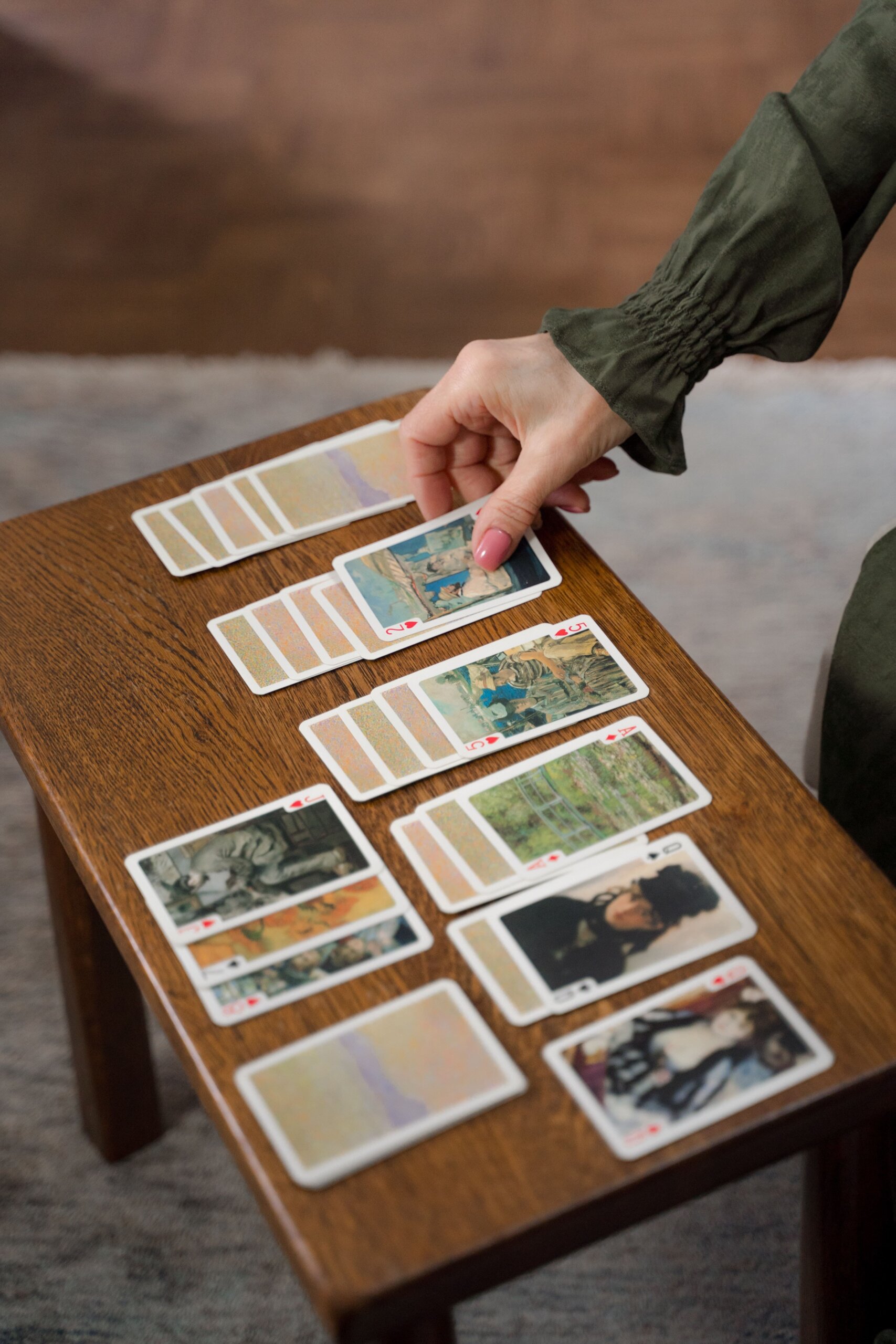Dealing and Setup in Go Fish
Dealing and setup in Go Fish involve the following steps:
- Gather a standard deck of 52 playing cards. If playing with more than three players, it’s recommended to use two decks shuffled together.
- Select a dealer. The dealer shuffles the cards thoroughly and deals them one at a time, face-down, to each player. The number of cards dealt to each player depends on the number of players participating. For a game with two players, deal seven cards to each player. For three or four players, deal five cards to each player. If there are more players, adjust the number of cards accordingly.
- After dealing the initial hands, place the remaining cards face-down in the center of the table to create a draw pile. This pile serves as the “ocean” or “pond” from which players will draw cards during the game.
- Each player arranges their cards in their hand, keeping them hidden from the other players. It’s important to keep the cards organized to easily identify and group cards of the same rank during gameplay.
Once the dealing and setup are complete, the game is ready to begin. The players take turns asking each other for specific ranks of cards and drawing from the draw pile as needed.
The objective is to collect sets of four cards of the same rank. The player with the most sets at the end of the game wins.
How to Ask and Fish in Go Fish
In Go Fish, asking for cards and “fishing” are essential actions that drive the gameplay. On your turn, you select an opponent and request a specific rank of card, such as asking if they have any Queens.
To make a valid request, you must already hold at least one card of the rank you’re asking for. If the opponent has any cards of the requested rank, they must give them all to you, and you collect them as a set in front of you. If the opponent doesn’t have any cards of the requested rank, they respond with “Go Fish!” This prompts you to draw a card from the draw pile without revealing it to others.
If the card you draw matches the rank you asked for, you earn another turn to ask for cards. However, if it doesn’t match, your turn ends, and play passes to the next player clockwise.
Scoring in Go Fish
Scoring in Go Fish is straightforward and revolves around collecting sets or “books” of four cards of the same rank. The objective is to accumulate as many books as possible throughout the game. Once the game ends, each player counts their books, and the player with the highest number of books wins. In case of a tie, players with the same number of books can opt for additional rounds to determine the ultimate winner. While some players keep a scorecard to track their books in each round, the primary focus remains on collecting the most books rather than assigning point values to individual cards.
Drawing New Cards in Go Fish
Drawing new cards is a fundamental aspect of the game that offers strategic opportunities. During your turn, if you find yourself lacking any cards of the rank you’re seeking or if your opponent responds with “Go Fish,” you must draw a card from the draw pile. Simply take the top card from the pile without revealing it to others and add it to your hand.
The card you draw becomes a valuable addition to your collection. It joins your existing hand, providing you with more options for future turns. You can utilize it strategically to request specific ranks from opponents or to complete sets. If the card you draw matches the rank you previously asked for, you’re granted an additional turn.
This grants you the advantage of continuing to ask opponents for cards, increasing your chances of securing more sets.
Drawing new cards is a key element in expanding your possibilities and refining your strategy.
Keep a close watch on the draw pile and employ your draws strategically to enhance your hand, improve your chances of forming sets, and outmaneuver your opponents.
Developing a Strategy in Go Fish
Developing a strategy in Go Fish can significantly improve your chances of success. One key consideration is observing and remembering the cards that are being requested and given away, helping you make informed decisions.
Targeting weaknesses is another important aspect, identifying opponents who have unsuccessfully requested certain ranks and asking them for cards you already hold to deplete their resources. Balancing your requests by striking a balance between asking for needed ranks and those you already possess ensures you expand options while maintaining potential set completions.
Strategic fishing involves strategically selecting draws, prioritizing cards that aid in completing sets or increase the likelihood of successful future requests. Timing and bluffing can be effective tactics to confuse opponents, occasionally asking for ranks you don’t actually hold.
Lastly, adapting to changing circumstances, tracking cards played, sets formed, and the remaining draw pile, and modifying your approach accordingly maximizes your chances of success. By employing these tactics, you can enhance your gameplay, collect sets efficiently, and outwit your opponents, ultimately increasing your chances of winning.


